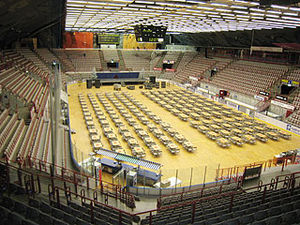

The underground provides isolation from all climates. The temperature within the soil or rock offers a moderate and uniform thermal environment compared with the extremes of surface temperatures. These moderate temperatures and the slow response of the large thermal mass of the earth provide a wide range of energy conservation and energy storage advantages. Thus, the underground provides both protection from adverse climates and substantial energy savings.
One of the most representative examples of this beneficial effect is the Gjovik cavern in Norway. This cavern, which was excavated for the winter Olympic games of Lillehammer, works as a multi-purpose arena useable for hosting ice sport matches as well as for conferences, exhibitions and fairs, and holds 5,000 people. Built in 1993, it is still the World’s largest cavern hall for public use. One of the main reasons for its construction underground were the great energy savings that were possible due to the stable thermal environment provided by the rock mass.
